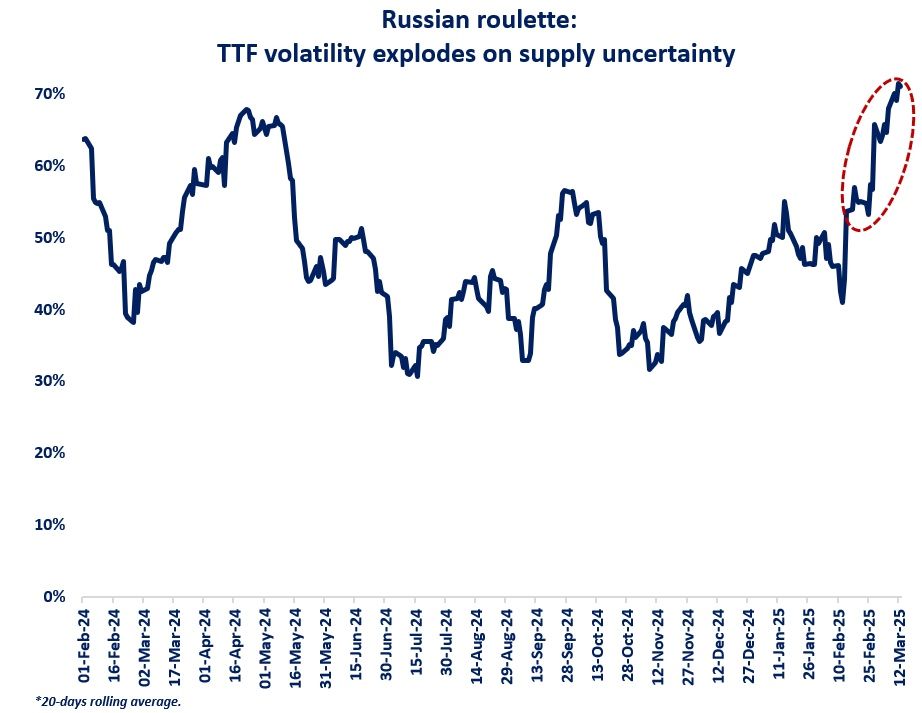

Despite eased market tensions, gas price volatility remained extremely high on TTF through 2023, almost three times above its historic average.
This is reflective of a fragile global and European gas balance and tight supply fundamentals (as incremental LNG supply does not offset the reductions in Russian piped gas deliveries to Europe).
Beyond this short-term setting, there are structural factors which are driving this volatility:
(1) on the supply side: LNG became the new baseload of European gas supply. this also means that European hub prices will become more sensitive to a broader range of factors impacting the supply-demand fundamentals of global LNG.
In the past, this sensitivity was in a way tempered by the nomination rights embedded in the long-term Russian pipeline contracts;
(2) on the demand side: gas-fired generation is playing an increasingly important role in providing back-up to a power system characterised by a rising share or variable renewables. This naturally increases the variability of gas demand and hence price volatility;
(3) financialization of the gas market: TTF grew from a local gas hub in the early 2000s to become the “Global Gas Wheel”, attracting market players from all around the world to hedge their positions and pursue increasingly sophisticated risk-management strategies. The growing liquidity of the hub naturally attract non-physical players, who see rising volatility as an opportunity for profit making/taking.
The rising volatility of TTF is reflective of the structural changes which are shaping the European market. It is also an enabling factor for the gas system to react to an increasingly complex and interconnected global energy system.
What is your view? How will TTF’s volatility evolve in the coming years? Do you see risks or opportunities associated with this trend?
Source: Greg MOLNAR













